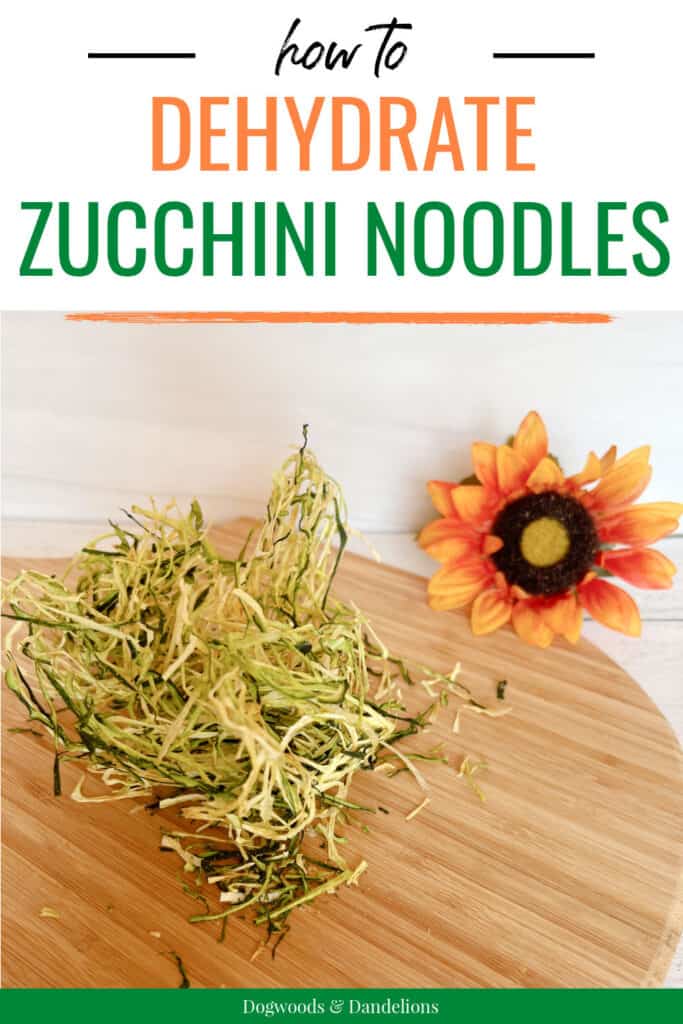How to Dehydrate Zucchini Noodles
During the summer months, zucchini tends to be very prolific. If your zucchini plants are producing like crazy, you may be wondering how to preserve the abundance of zucchini for later. Why not try dehydrating zucchini noodles?
This tutorial will show you how easy it can be to turn a lot of zucchini into crispy noodles that you can store on the shelf for winter. Even better, this simple process will only take a couple of minutes of your time.
Remember, you can also use this same process with any type of summer squash. A mix of yellow squash and green zucchini makes really pretty noodles. And you can also use this same process with shredded zucchini or squash.
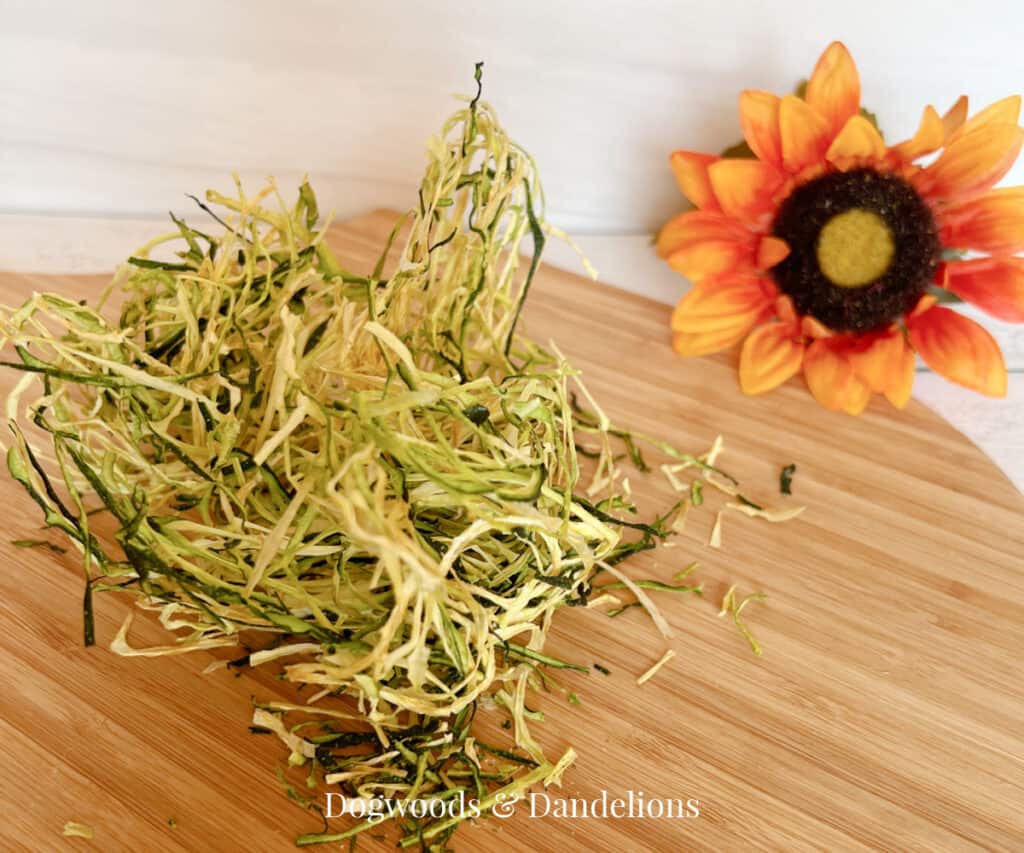
Affiliate Disclosure: Please note that some of the links in this article may be affiliate links and I may receive a small commission if you purchase something through a link. It will not change your cost. As an Amazon Associate, I earn from qualifying purchases. For more information, see my disclosures page.)
Tools You Need to Dehydrate Zucchini
First, you need to spiralize the zucchini to turn it into noodles. There are many different tools on the market to cut zucchini into noodles.
I had a spiralizer like this one and it worked great. However, I finally did get rid of it because it took up so much room to store, and the only thing I ever used it for was making zucchini noodles.
This spiral cutter is what I currently own and I love that it can easily fit in a drawer. It doesn’t take up near the amount of storage space that the multiple-blade spiralizer does. It is what I used to make the zucchini noodles in all the pictures in this post.
You can also make noodles with a julienne peeler or even a vegetable peeler, though they won’t be round like spaghetti noodles.
Want to know how to preserve your homegrown fruits and vegetables? Get my FREE Preserving Cheatsheets that explain which preserving methods are best for each vegetable and fruit.
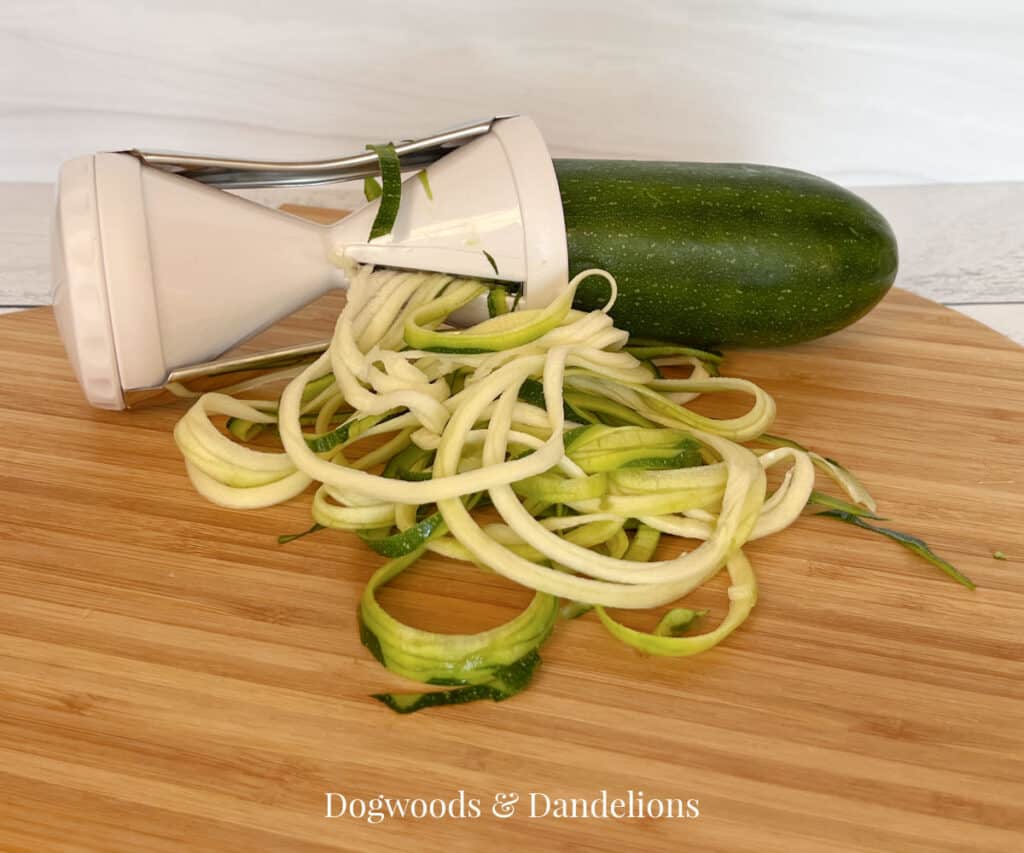
However, if you do make lots of zucchini noodles, the spiralizer is the way to go. It will turn pounds of zucchini into noodles in a few short minutes so take that into consideration when deciding what type of gadget you want to purchase to make your noodles.
Of course, you will also need a food dehydrator. I’ve been using this model for well over 10 years and it has served me well. However, the Excalibur dehydrator is supposedly the best model if you have the extra money to spend.
Learn more about the benefits of dehydrating food and why I think it is the perfect preserving solution for backyard gardeners.
How to Dehydrate Zucchini Noodles
First, it is best to choose small zucchini. Save the larger zucchini for shredding so that you can remove the seeds first. The seeds of large zucchini can be tough once dehydrated.
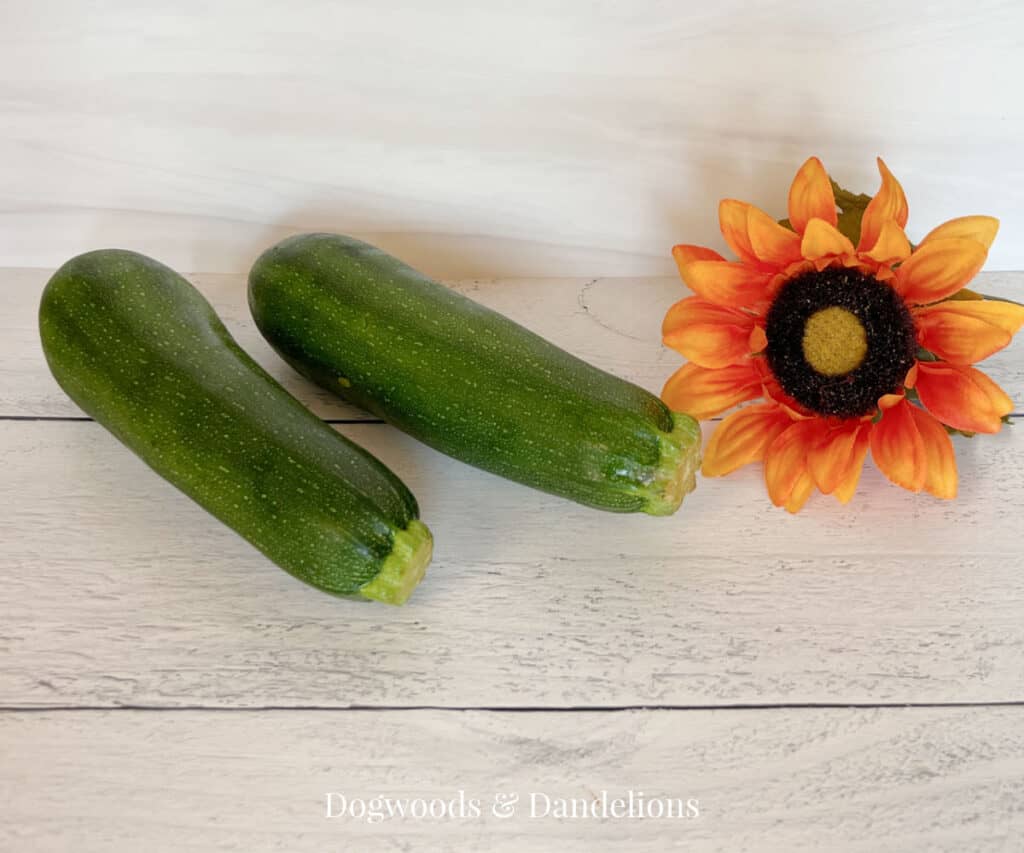
Wash and dry your zucchini. Cut off the ends of the zucchini. Using the tool of your choice, spiralize the zucchini into noodles. Many people call these noodles zoodles.
If the noodle strands are too long, cut them into smaller pieces with a pair of kitchen shears. Gently place the noodles on your dehydrator trays. I like to use my dehydrator screens, but if you don’t have them for your dehydrator, you can still dehydrate your noodles without them.
Dehydrate the zucchini noodles at 135 degrees. The time it takes will depend on how thick your noodles are and how many trays of noodles you are drying at once. The thicker the noodles, the longer they will take.
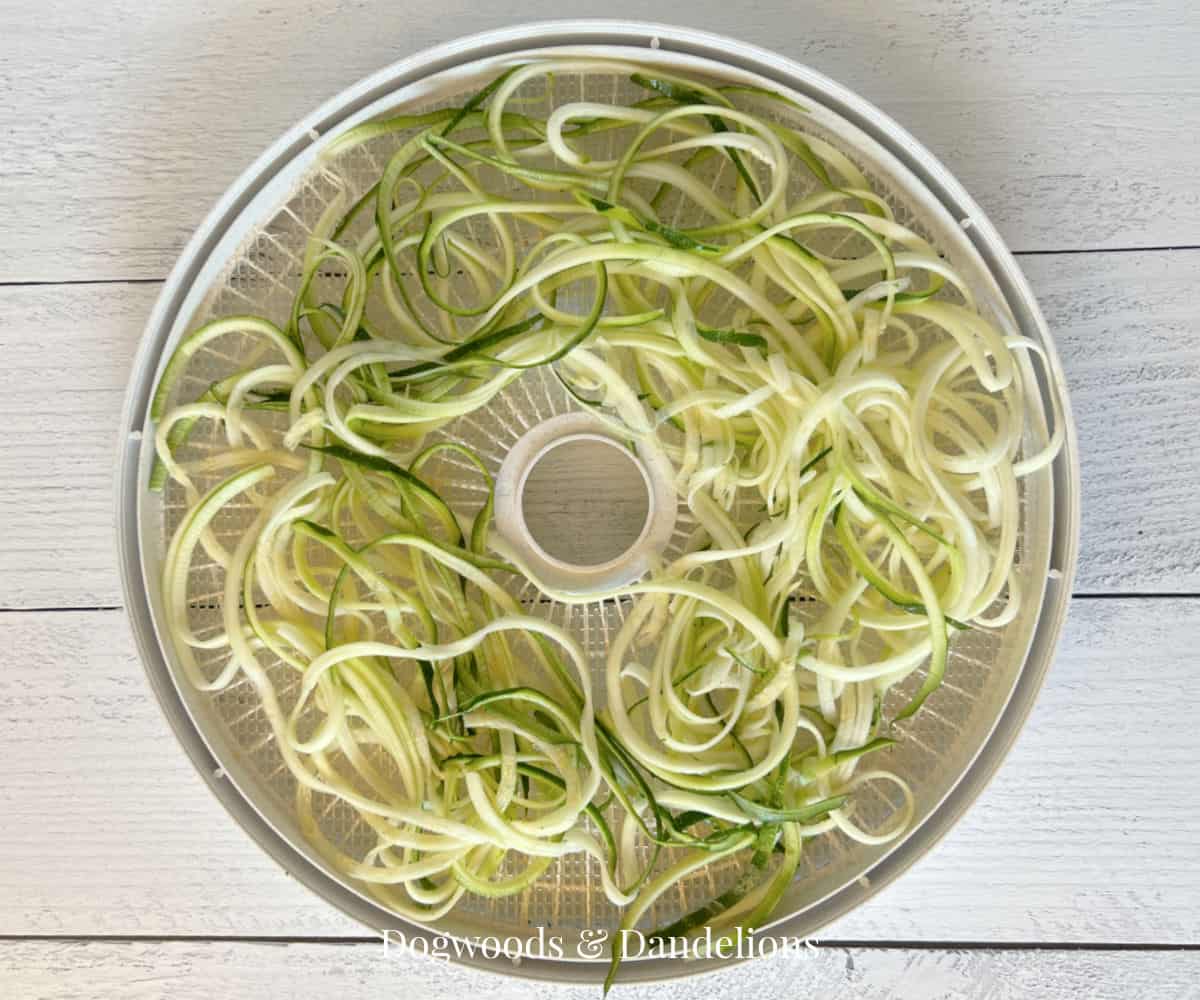
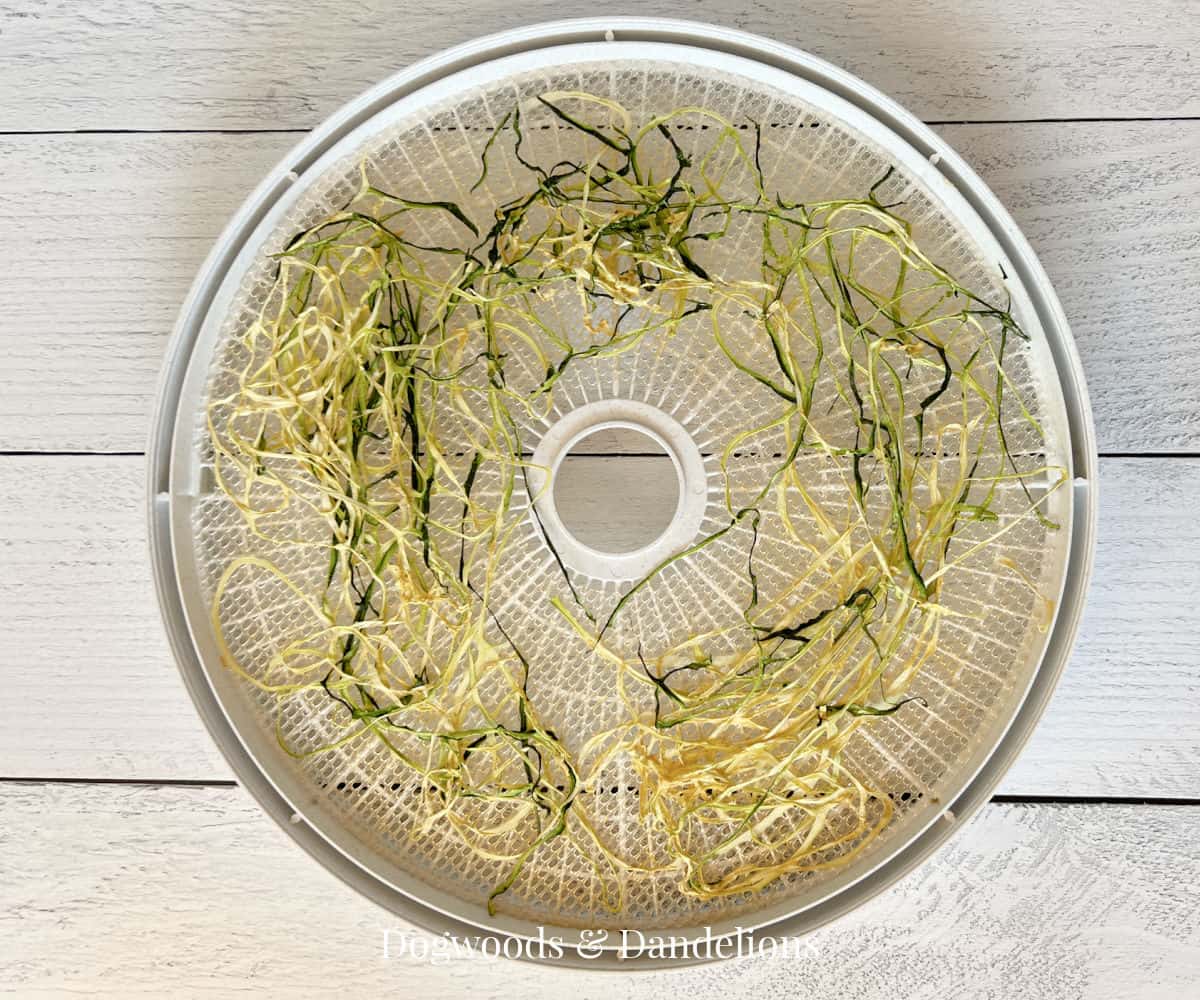
Likewise, the more trays of noodles you are drying, the more time it will take to fully dehydrate them. You might be surprised at just how much water is in a zucchini after seeing the end result of dehydrating it.
Once the noodles are dry, remove them from the dehydrator racks being careful not to crush them.
I will often start my dehydrator at night so that the next morning, I can remove my dried zucchini and put it into storage containers.
How to Store Zucchini Noodles
Store your dry zucchini noodles in a large mason jar or another airtight container out of direct sunlight. Vacuum sealing zucchini noodles tends to crush them. A cool dark place is ideal and will help your dry zucchini last longer.
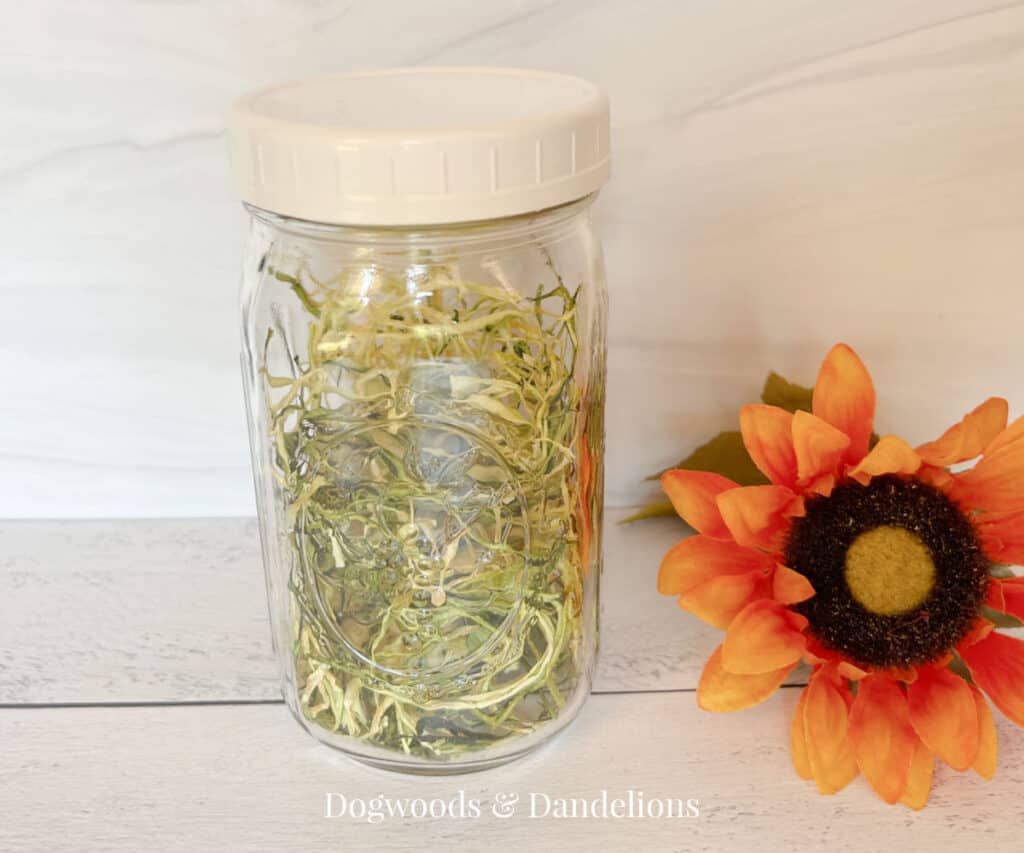
If you want to store the dry zucchini noodles for longer than a year, adding an oxygen absorber in with the zucchini is a good idea to remove any residual oxygen.
I have tried storing dried zucchini in Ziplock bags but they don’t seem to stay crisp very long.
How to Rehydrate Zucchini Noodles
If you are adding dried zucchini to a soup or stew, you can just add them directly to the liquid and allow the heat with the rest of the ingredients. They are usually soft and ready to eat in about 15 to 20 minutes.
If you want to rehydrate zucchini noodles to use in other recipes, pour boiling water over the noodles in a heat-proof jar or bowl. Allow them to soak for 20-30 minutes to soften. Drain and proceed with the recipe.
Ways to Use Zucchini Noodles
One of my favorite ways to use zucchini noodles is to rehydrate them and top them with my favorite tomato sauce and a sprinkle of Parmesan cheese. They are a great substitute in place of pasta noodles if you are on a low-carb diet.
You can also use zucchini noodles in your favorite pasta dishes. If your family isn’t on board with the whole zucchini noodle trend, try replacing just a bit of the pasta with the zucchini noodles.
Next time, increase the amount of zucchini just a bit. We still do about half pasta and half zucchini noodles in most of our pasta recipes.
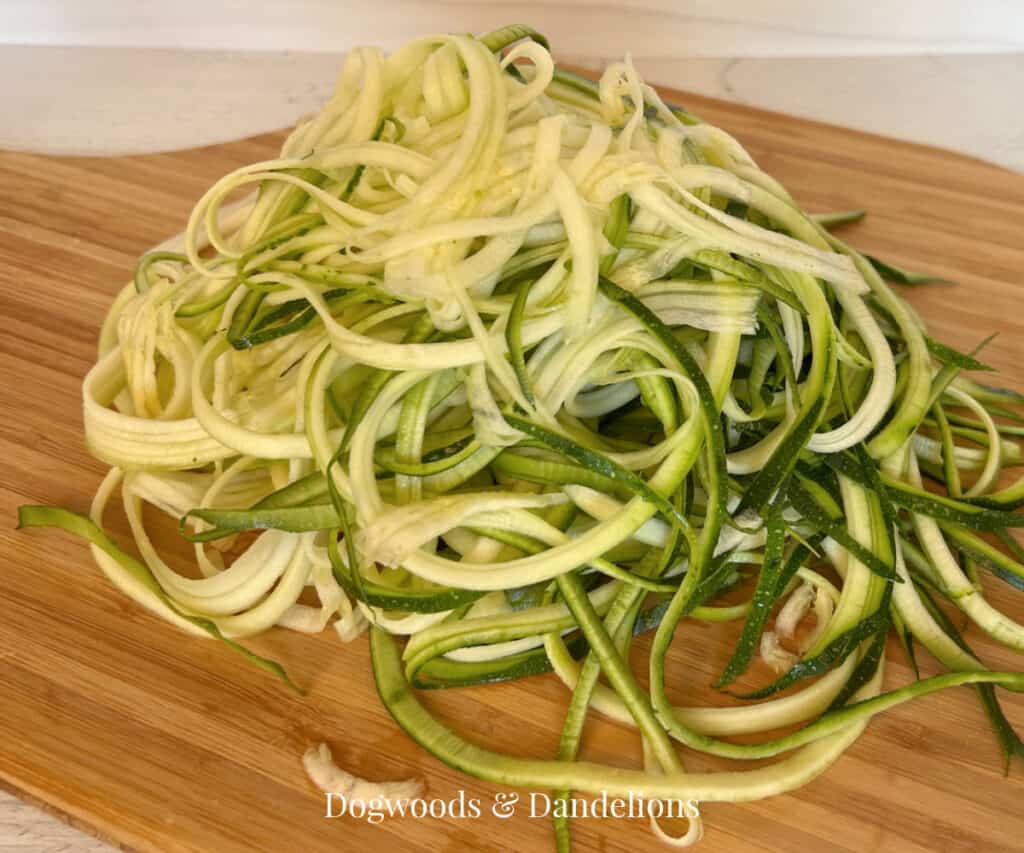
I also like to chop up the zucchini noodles in small pieces (or just use shredded squash or zucchini) and add them to soups. My family doesn’t even know they are eating zucchini when I do this. (I have one child that isn’t a fan of squash in any form!)
You can also rehydrate zucchini noodles (or shredded zucchini) to make zucchini bread. Once rehydrated, chop the noodles into small pieces before adding them to the batter.
Rehydrated zucchini noodles are also fabulous added to a stir fry. Once rehydrated, drain the noodles and cook them in a little oil in a skillet with the other vegetables.
Can I Dehydrate Summer Squash the Same Way?
In a word, YES. Summer squash can easily be turned into noodles too. I often do a mix of whatever I have available from my garden.
Can I Dehydrate Other Forms of Zucchini?
Yes, you can use this method to dehydrate zucchini in many ways. To make zucchini chips, slice the zucchini into thin slices and place the slices in a single layer on the dehydrator’s trays. Dry the zucchini slices at 135 degrees and store as described above.
To dehydrate shredded zucchini, shred the zucchini in a food processor or by hand. Place the shredded zucchini on your dehydrator’s nonstick sheets. If you don’t have those, you can cut parchment paper to fit your dehydrator trays.
Dry and store the zucchini as described above.
Why I Love Dehydrating Vegetables
I love having dehydrated vegetables on hand. They are shelf-stable and therefore don’t take up refrigerator or freezer space, especially when space is at a premium.
You also don’t have to worry about the food going bad in the event of a power outage. And dehydrating is much simpler than canning.
It is so easy to toss a handful of dehydrated vegetables in with some broth and cooked meat to make a fast soup on a cold winter day.
Related Posts
